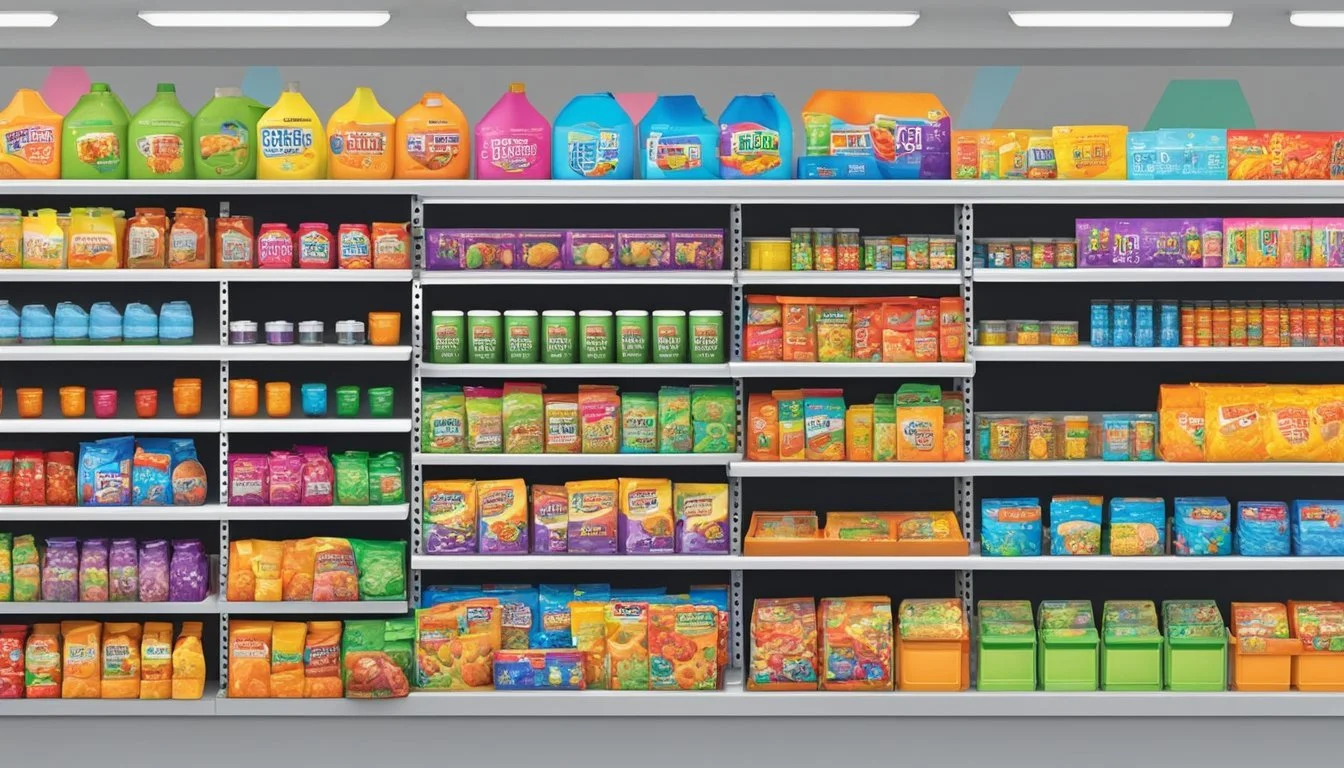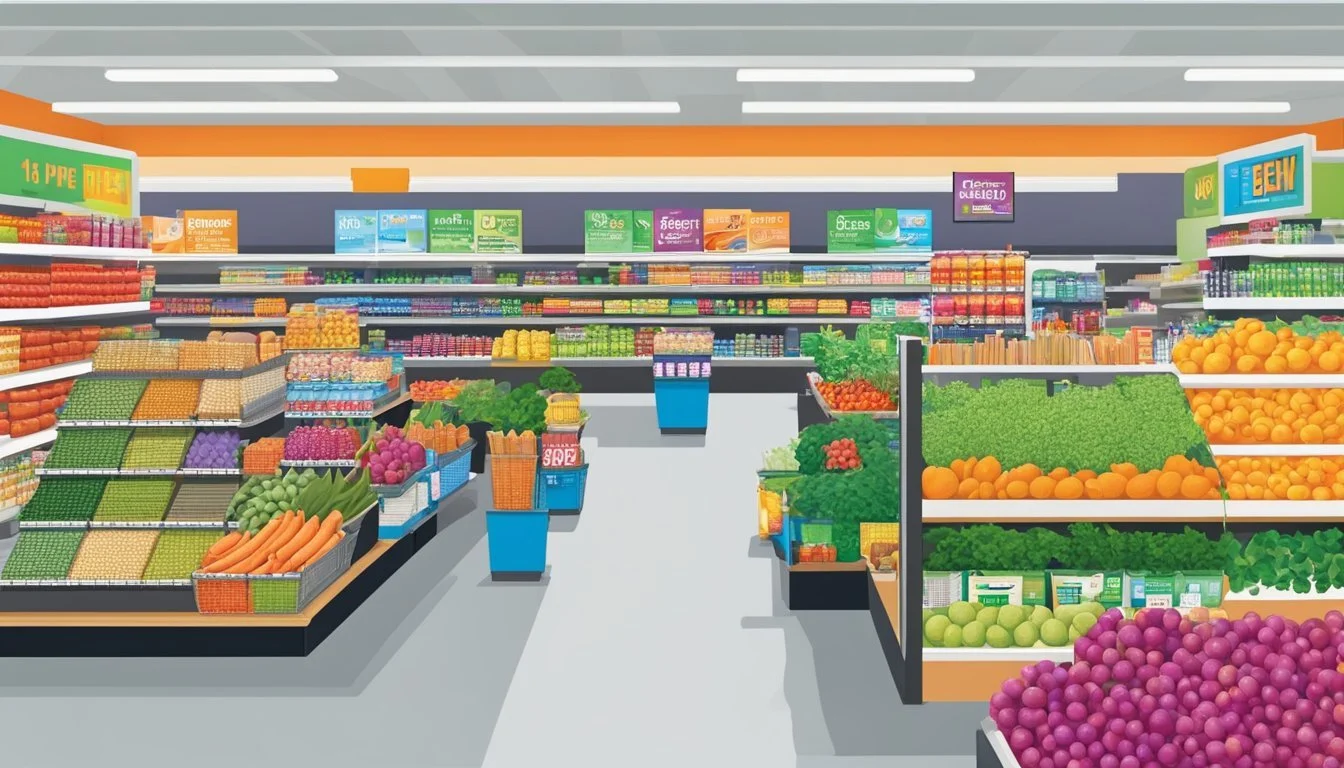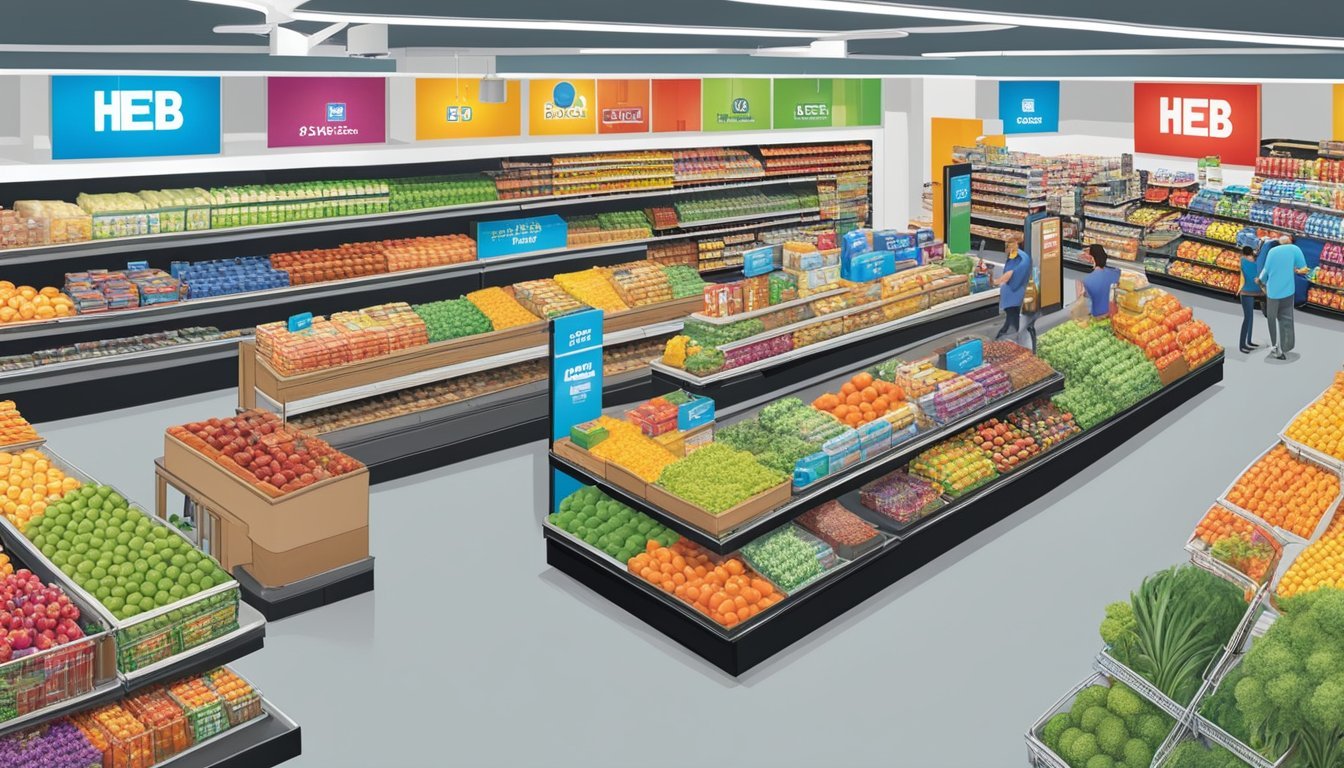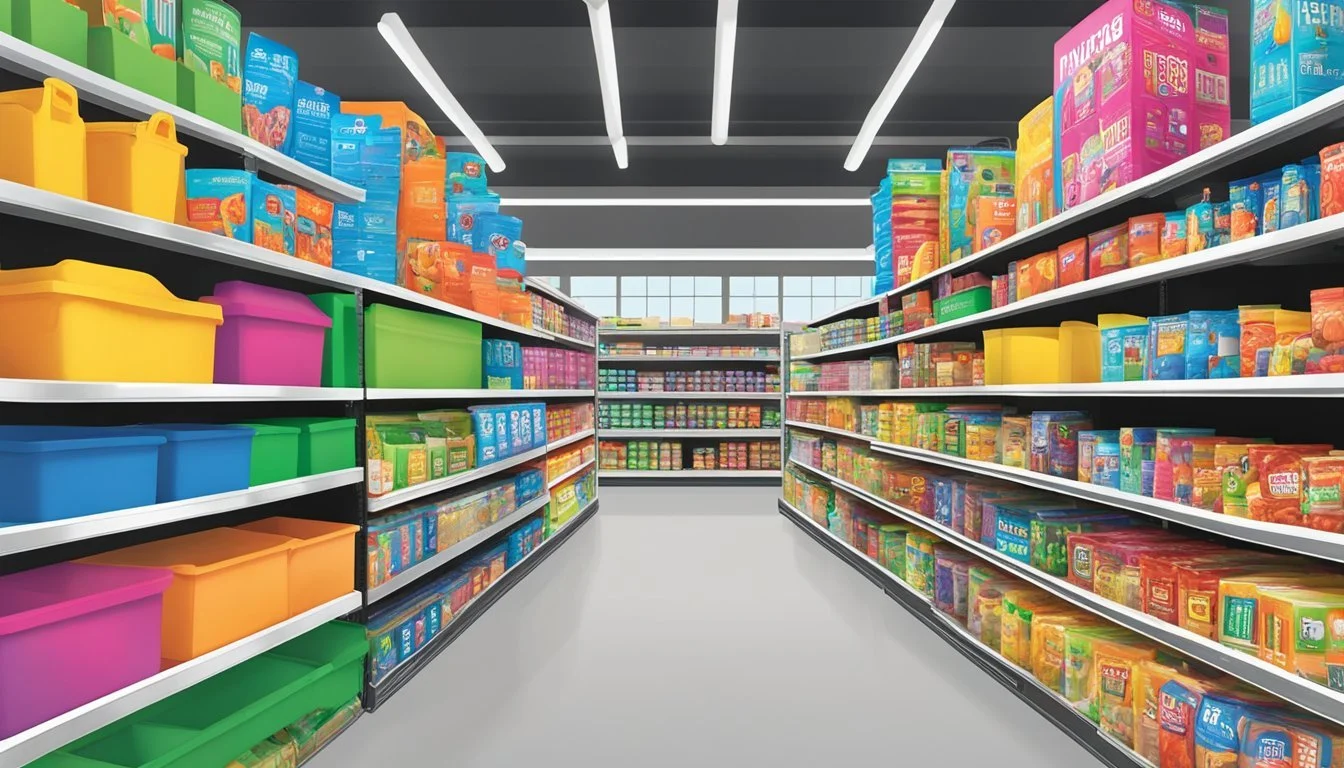Five Below vs H-E-B
A Comprehensive Comparison of Budget-Friendly Options
When it comes to grocery shopping, consumers are always on the lookout for the best value and experience. Five Below and H-E-B are two retail chains that have gained popularity in recent years, albeit with different approaches to serving customers.
Five Below primarily focuses on offering a wide range of products at $5 or less, including some grocery items. H-E-B, on the other hand, is a full-service supermarket chain known for its quality products and customer service. H-E-B has recently been ranked as America's favorite grocery store, surpassing retail giants like Costco and Amazon in consumer surveys.
While both stores cater to budget-conscious shoppers, they differ significantly in their product offerings, shopping experience, and overall approach to retail. This comparison will explore the strengths and weaknesses of Five Below and H-E-B to help consumers make informed decisions about where to shop for their grocery needs.
Company Profiles
Five Below and H-E-B are two distinctive retail chains with unique origins and market positions. Their contrasting business models and regional focuses have shaped their growth trajectories and customer appeal.
Understanding Five Below
Five Below is a rapidly expanding discount store chain founded in 2002 by David Schlessinger and Tom Vellios. The company targets teens and pre-teens with trendy products priced at $5 or less. Five Below's merchandise includes toys, tech accessories, beauty products, and room decor.
With over 1,000 stores across the United States, Five Below has carved out a niche in the retail market. The company's success stems from its ability to quickly adapt to trends and maintain low prices. Five Below's stores feature a bright, colorful layout designed to create an exciting shopping experience for young customers.
Exploring H-E-B's Texan Roots
H-E-B, short for Howard E. Butt, is a privately held supermarket chain deeply rooted in Texas culture. Founded in 1905 by Florence Butt in Kerrville, Texas, H-E-B has grown into a beloved regional powerhouse with over 380 stores throughout Texas and Mexico.
H-E-B is known for its commitment to quality products, competitive prices, and exceptional customer service. The company offers a wide range of groceries, including many locally sourced Texan products. H-E-B's stores often feature in-house bakeries, delis, and pharmacies.
The chain's strong community involvement and philanthropic efforts have earned it a loyal customer base. H-E-B donates 5% of its pre-tax profits to charitable causes, focusing on education, hunger relief, and disaster response in Texas communities.
Store Offerings Comparison
Five Below and H-E-B offer distinct product ranges and shopping experiences. Their store offerings differ significantly in terms of variety, quality, and exclusivity.
Range of Products Available
Five Below specializes in low-cost items priced at $5 or less. Their inventory includes toys, games, tech accessories, beauty products, and home decor. The selection changes frequently, with seasonal items rotated throughout the year.
H-E-B, on the other hand, is a full-service grocery store. It carries a wide array of fresh produce, meats, dairy, baked goods, and pantry staples. H-E-B also stocks household items, health and beauty products, and even some clothing basics.
The product range at H-E-B is more comprehensive and consistent, catering to everyday needs and grocery shopping. Five Below focuses on discretionary items and impulse purchases.
Quality of Goods Offered
H-E-B is known for its commitment to quality, particularly in fresh produce and meats. The store maintains high standards for its perishables, ensuring customers have access to fresh, wholesome foods.
Five Below's products are designed to be affordable rather than long-lasting. While some items may offer good value for the price, the overall quality is generally lower than products found at traditional retail stores.
H-E-B's emphasis on quality extends to its prepared foods and bakery items, which are often made in-store. Five Below does not offer fresh or prepared foods.
Private Label Brands
H-E-B has developed a strong portfolio of private label brands. These include H-E-B Organics for natural and organic products, Hill Country Fare for budget-friendly options, and Meal Simple for ready-to-eat meals.
The grocery chain's Central Market brand offers gourmet and specialty items. H-E-B's private labels often compete with national brands in terms of quality and value.
Five Below does not have established private label brands. Most products are from third-party manufacturers or created specifically for Five Below, often without recognizable brand names.
Exclusivity of Merchandise
H-E-B offers some exclusive products through its private labels and partnerships with local Texas businesses. The store frequently features regional specialties and products made in Texas.
Five Below's merchandise is often exclusive to their stores, as they work with manufacturers to create unique, low-cost items. However, these are typically not brand-name products.
H-E-B's exclusivity lies in its curated selection of local and regional items, while Five Below's exclusivity is based on specially designed budget products. H-E-B provides a more premium shopping experience with higher-quality exclusive offerings.
Price and Value Proposition
Five Below and H-E-B employ distinct pricing strategies to attract budget-conscious consumers. Both retailers aim to provide value, but their approaches differ in key ways.
Pricing Strategies
Five Below maintains a simple pricing model, with most items priced at $5 or less. This approach appeals to shoppers seeking affordable options across various categories. H-E-B, on the other hand, uses a more traditional grocery pricing structure. The Texas-based chain focuses on competitive everyday prices and targeted promotions.
H-E-B's pricing strategy emphasizes value through a mix of private-label and national brands. They offer frequent discounts and loyalty rewards to incentivize repeat purchases.
Budget-Friendly Options
Five Below excels in providing budget-friendly non-grocery items like clothing, accessories, and home decor. Their $5-and-below concept makes it easy for shoppers to control spending.
H-E-B caters to budget-conscious grocery shoppers through:
Private-label products at lower price points
Weekly specials and digital coupons
Bulk-buying options for additional savings
Both retailers aim to offer great value, but in different product categories.
Comparative Price Analysis
When comparing grocery prices, H-E-B generally offers more competitive rates than Five Below's limited food selection. H-E-B's broader range allows for better price comparisons across brands and sizes.
Five Below's fixed pricing model can provide savings on certain items compared to traditional retailers. However, their limited grocery options make direct comparisons difficult.
Store Grocery Pricing Non-Grocery Pricing H-E-B Competitive, varied Market-rate Five Below Limited selection $5 or less
For comprehensive grocery shopping, H-E-B typically offers better overall value. Five Below shines in specific non-grocery categories where their $5-and-under model provides significant savings.
Customer Experience
H-E-B and Five Below offer distinct customer experiences tailored to their target markets. Both retailers prioritize customer satisfaction but take different approaches in their service models and shopping environments.
In-Store Shopping Experience
H-E-B provides a comprehensive grocery shopping experience with wide aisles and a focus on product variety. The stores are known for their cleanliness and well-organized layouts, making it easy for customers to find items.
Five Below, on the other hand, offers a treasure hunt-style experience. The stores are typically smaller with a more compact layout. Customers can browse through a rotating selection of trendy, low-cost items across various categories.
Both retailers maintain consistent store hours to accommodate customer schedules. H-E-B often operates longer hours to serve as a one-stop shop for groceries and household needs.
Digital Services and E-commerce
H-E-B has invested heavily in its digital presence. The company offers a user-friendly app and website for online ordering, curbside pickup, and home delivery services. These digital tools enhance convenience for customers who prefer to shop remotely.
Five Below's e-commerce platform is more limited but functional. The website allows customers to browse and purchase items online, though the selection may differ from in-store offerings. The company focuses more on driving traffic to physical locations rather than competing in the digital space.
Customer Service and Satisfaction
H-E-B is renowned for its exceptional customer service. The company trains employees to be knowledgeable and helpful, fostering a positive shopping environment. This commitment to service has contributed to high customer satisfaction ratings and loyalty.
Five Below takes a more hands-off approach to customer service. The stores are designed for self-service shopping, with limited staff interactions. This model aligns with their low-price strategy and appeals to customers who prefer a quick, no-frills shopping experience.
Both retailers strive to create an emotional connection with their customers. H-E-B achieves this through community involvement and personalized service, while Five Below focuses on offering exciting, affordable products that resonate with their target demographic.
Operational Excellence
Five Below and H-E-B demonstrate distinct approaches to operational efficiency in their supply chains and inventory management practices. These factors significantly impact their ability to meet customer needs and maintain competitive pricing.
Efficiency of Supply Chain
Five Below operates a lean supply chain model focused on rapid inventory turnover. The company utilizes a network of distribution centers strategically located near major transportation hubs. This setup allows for quick replenishment of stores, typically within 1-2 days of order placement.
H-E-B, on the other hand, maintains a more vertically integrated supply chain. The supermarket chain owns several manufacturing facilities and distribution centers across Texas. This integration enables H-E-B to exercise greater control over product quality and reduce costs associated with third-party suppliers.
Both retailers leverage technology to optimize their supply chains. Five Below employs advanced forecasting algorithms to predict demand and adjust inventory levels accordingly. H-E-B utilizes a sophisticated logistics system that tracks products from production to shelf placement.
Inventory and Stock Management
Five Below's inventory management centers on a limited, rotating selection of trendy items priced at $5 or less. This approach allows for quick sell-through and minimizes the risk of excess stock. The company employs a just-in-time inventory system, keeping minimal backstock in stores.
H-E-B takes a more comprehensive approach to inventory management. The supermarket chain stocks a wide variety of products, including fresh produce, meats, and prepared foods. H-E-B uses digital shelf labels and real-time inventory tracking to maintain optimal stock levels.
Both retailers offer digital coupons to drive sales and manage inventory. Five Below frequently runs promotions on slow-moving items to clear shelf space. H-E-B's digital coupon program is more extensive, offering personalized deals based on customer purchase history.
H-E-B's convenience store format, known as H-E-B Go, further demonstrates the company's inventory management capabilities. These smaller stores stock a curated selection of high-turnover items tailored to local preferences.
Consumer Engagement and Retention
Both Five Below and H-E-B employ various strategies to engage and retain customers. These retailers focus on creating memorable shopping experiences and fostering brand loyalty through targeted initiatives.
Loyalty Programs and Rewards
H-E-B offers a robust loyalty program called H-E-B Points. Shoppers earn points on purchases, which can be redeemed for discounts and free products. The program also provides personalized coupons based on shopping history.
Five Below, in contrast, does not have a traditional loyalty program. Instead, they rely on frequent promotions and flash sales to drive repeat visits. Their "$5 and below" pricing strategy inherently encourages multiple purchases.
Recent surveys indicate that H-E-B's loyalty program contributes significantly to customer retention. Many shoppers report feeling more connected to the brand through personalized offers.
Social Media and Community Presence
H-E-B maintains an active social media presence across platforms like Twitter and Instagram. They regularly share recipes, product highlights, and community initiatives. This engagement extends to local events and partnerships with Texas-based organizations.
Five Below takes a different approach, focusing on trendy products and youth-oriented content on social media. Their posts often feature new arrivals and seasonal items to generate excitement.
Customer perception of both brands on social platforms is generally positive. H-E-B receives praise for community involvement, while Five Below is appreciated for its fun, affordable finds.
Comparative Market Position
Five Below and H-E-B operate in different retail segments, with distinct market positions and brand identities. Their performance metrics and consumer perceptions vary significantly based on their business models and target markets.
Market Performance and Rankings
H-E-B consistently ranks as a top grocery retailer in the United States. In 2022, H-E-B reclaimed the top spot in the dunnhumby Retailer Preference Index, surpassing Amazon and other major competitors. This achievement reflects H-E-B's strong performance in key areas such as price, quality, and digital offerings.
Five Below, as a discount store chain, operates in a different market segment. While not directly competing with grocery chains, Five Below has shown steady growth in its niche. The company's focus on value-priced merchandise attracts a different customer base than traditional grocers.
Brand Perception and Values
H-E-B has cultivated a reputation for high-quality products, competitive pricing, and strong community involvement. Customers associate the brand with fresh produce, cleanliness, and a wide selection of essentials. H-E-B's commitment to local sourcing and supporting Texas communities has strengthened its brand loyalty.
Five Below's brand centers on affordability and fun, targeting younger shoppers and bargain hunters. The company's "$5 and below" concept creates a unique shopping experience. While not known for groceries, Five Below has carved out a distinct identity in the retail landscape.
Both retailers prioritize value, but express it differently:
H-E-B: Quality groceries at competitive prices
Five Below: Trendy items at fixed low prices
Community and Environmental Impact
Both Five Below and H-E-B have made efforts to positively impact their communities and the environment. Their initiatives focus on sustainability, education, hunger relief, and local involvement.
Sustainability Initiatives
Five Below has implemented energy-efficient lighting and HVAC systems in its stores to reduce energy consumption. The company uses recyclable packaging materials and encourages customers to bring reusable bags.
H-E-B takes a more comprehensive approach to sustainability. The grocery chain has installed solar panels on many store rooftops and distribution centers. H-E-B also operates a fleet of low-emission vehicles for product delivery. The company has set ambitious goals to reduce food waste, with programs to donate unsold food to local food banks.
Community Support and Involvement
Five Below partners with various youth-focused organizations to support education and child development. The company runs an annual toy drive during the holiday season to benefit underprivileged children.
H-E-B is deeply involved in its local communities. The grocery chain operates a disaster relief program, providing food and supplies to areas affected by natural disasters. H-E-B's literacy initiative donates books to schools and libraries. The company also sponsors numerous local events and charitable organizations throughout Texas.
H-E-B's commitment to hunger relief is particularly notable. The grocery chain operates mobile kitchens that provide meals during emergencies and contributes millions of pounds of food to food banks annually.
Conclusion
Five Below and H-E-B cater to different shopping needs. Five Below specializes in affordable merchandise, offering a wide range of products priced at $5 or less. H-E-B, on the other hand, is a full-service grocery store with a diverse selection of food items and household goods.
H-E-B stands out for its focus on fresh produce, local products, and high-quality store brands. The chain has earned a reputation for excellent customer service and community involvement.
Five Below excels in providing budget-friendly options for various categories, including toys, accessories, and seasonal items. Its stores are designed to create a fun shopping experience, particularly appealing to younger customers.
For grocery essentials and fresh foods, H-E-B is the clear choice. However, Five Below offers unique value for discount shoppers seeking inexpensive gifts, party supplies, and trendy items.
The better store ultimately depends on individual shopping priorities. Those seeking a comprehensive grocery selection will prefer H-E-B, while bargain hunters may find Five Below more appealing for certain purchases.









